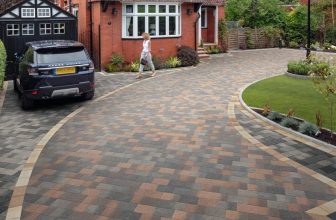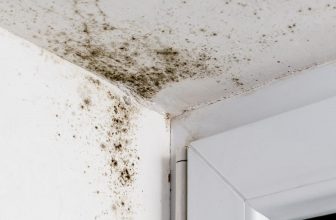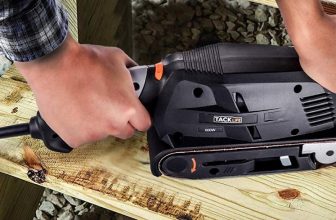Homeowners have a vast number of different kitchen countertops to choose from when they’re planning a remodel. There are wood, soapstone, marble, and granite countertops, and all of them need to be cleaned properly to keep them in the best condition possible. It also means that the homeowner is going to want to take the proper precautions to ensure that they don’t damage their specific countertop with heat or with scratching.
One of the first things that a person can do to protect their countertops—regardless of what type they have—is to purchase a proper cutting board. We see way too many people using their expensive countertop as a cutting board, so please stop doing that. Another thing that we’d advise the homeowner to do is to buy some kind of heat pad or trivet to set their hot pots and pans on so they don’t have to place it directly on the counter and risk ruining them with the heat.
Once a person has the tools that they need to protect their counter from knife or heat damage, it’s time for them to learn how to maintain their specific countertop. Although we can’t possibly cover the cleaning and maintenance procedures for every counter in existence, we can cover some of the basic ones so that our readers can take care of them.
Cleaning Laminate Countertops
We think that we’re going to start this article by talking about how to clean one of the most common countertops currently available and one that’s in millions of homes. This countertop is the laminate counter. Let’s take a few moments and find out what it takes to clean this very common kitchen counter.
Items Needed:
- Warm Water
- Household Cleaner
- Microfiber Cloth
- Baking Soda
How To Clean:
The first thing we’d like to state before proceeding is that the household cleaner that you’re going to want to use on this type of counter needs to be very mild. Avoid using an acidic cleaner. It’s also important to use microfiber cloths for cleaning the counter. You never want to use scouring pads or steel wool on this type of counter because you’ll end up scratching it.
Cleaning is just as easy as you would need it to be. Just use the cloth, warm water, and your favorite household cleaner to do regular cleaning. If the counter is stained, then use water and some baking soda to make a paste. Apply that paste to the stain and wait for 5-10 minutes. When that amount of time has elapsed, rinse off the baking soda. Don’t scrub the stain with the baking soda because this product is abrasive and may scratch the surface of your laminate counter.
Cleaning Wood Countertops
Another common counter for kitchen is the wood countertop. These counters tend to look great, but they do require some special consideration to be properly maintained. Below are some of the things that should be done to keep your wood counters looking as good as new.
Items Needed:
- Warm Water
- Lemon
- White Vinegar
- A Mild Household Cleaner (If Desired)
- Spatula
- Salt
- Microfiber Cloth
How To Clean:
Let us start by saying that if you decide to use a household cleaner to clean your wood counter, then make sure that it’s not only a non-bleach cleaner but that it isn’t abrasive either. Use a mild cleaner and then test a portion of the counter before using it on a widespread basis.
It’s our recommendation, however, that instead of using a household cleaner on your wood counter, you instead use distilled white vinegar and water for day-to-day cleaning. Just mix vinegar and water and wipe it on the counter with a microfiber cloth. Be sure to dry the counter after cleaning.
If the counter has stains, then apply salt to the stain and cut a lemon in half. Use the lemon half to rub the salt into the stain. If necessary, use a spatula to clean off stuck-on food residue. Once again, make sure to completely rinse and dry the counter afterward.
Cleaning Stone Countertops
The next counters we’d like to discuss cleaning are the stone counters—specifically ones made out of marble and granite. Although these counters are extremely durable, so many people think of them as invulnerable, they still need to be properly maintained to keep them in good condition. Let’s find out how to clean these counters, shall we?
Items Needed:
- Water
- Hydrogen Peroxide
- Dish Soap
- Microfiber Cloths
- Plastic Wrap
- Tape
How To Clean:
Cleaning stone counters is easy. All you have to do is make a solution of warm water and dish soap, and then use that solution for daily cleaning. Once that cleaning has been done, the stone can be polished off with a microfiber towel to dry it and bring out its shine. Never use acidic or abrasive cleaning solutions on stone counters or you’ll end up stripping their sealer and/or etching the stone’s surface.
If you do need to remove stains from granite or marble, then use a solution of baking soda and water for oil-based stains. For water-based stains, use a solution of baking soda and hydrogen peroxide. Mix these to make a paste, and then apply that paste to the stain. Cover the paste with plastic wrap and make sure it’s taped down. Let it sit overnight, and then remove the plastic and rinse off the paste. As always, make sure to do a quick spot check with the solution on a corner of the stone to make sure it’s not going to discolor it before you use this method.
Cleaning Soapstone Countertops
Soapstone is becoming an increasingly popular choice for kitchen counters because it’s durable, non-porous, chemically inert, and heat-resistant. Of course, just because it’s durable doesn’t mean it doesn’t need to be properly cleaned to keep it in good condition. Below are some tips for cleaning soapstone counters.
Items Needed:
- Warm Water
- Non-Abrasive Household Cleaner
- Mineral Oil
- Microfiber Cloths
- Fine-Grit Sandpaper
How To Clean:
Using a non-abrasive household cleaner and your favorite microfiber cloths, go over the entirety of the surface of the counter. Afterward, rinse with warm water and dry off the surface. If the surface of the soapstone is stained and it can’t be cleaned with a non-abrasive household cleaner, then use very fine sandpaper to clean it.
When using fine sandpaper for stain removal on soapstone, be sure that you make sure that it’s 80-grit sandpaper or finer. Carefully remove the stain with the sandpaper and then apply mineral oil to the surface afterward. This will keep the soapstone looking good. Just keep in mind that if you use mineral oil on your soapstone counter, it will darken the stone, so if that’s not desirable, then don’t use this method of stain removal.





